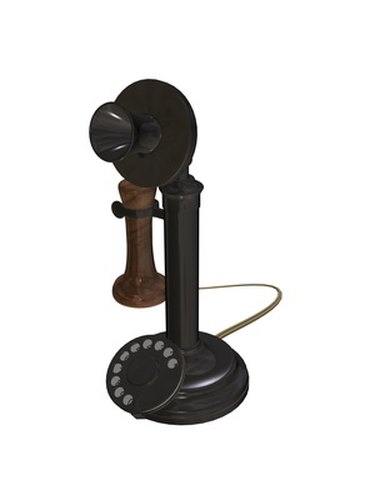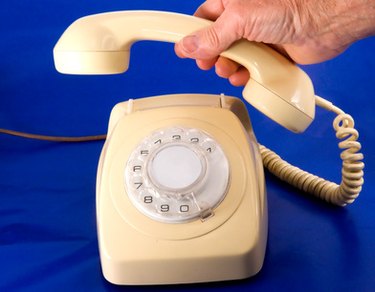
Despite the arguments about who actually invented the telephone, it has been an area of tremendous scientific advancement over the past century. Telephone communications--little more than a hobby in 19th century--evolved so that by the 1920s many advancements had started to be made that allowed this revolutionary form of communication to be available to everyone.
Candlestick Design
Video of the Day
This classic design is what most people imagine when they think of old-fashioned telephones. It consisted of a stand, not unlike a candlestick, into which you spoke, and a handheld listening device attached to the side of the main stand. This was still in wide use in the 1920s, but would soon be replaced by a similar design with a dial on the front for calling numbers directly.
Video of the Day
Handset

Originally called the French design, this concept incorporated an all-in-one speaking and listening device with a carriage which held the handset and the dial. This is much closer to the modern design of the telephone, but was not used widely for many years as it was still rather expensive.
Automated Exchanges
One of the most significant advancements in telephone communications in the 1920s was the advent of automated exchanges. Previously, people needed to contact an operator who would then connect the call. Automated exchanges allowed for personalised numbers to be dialled from home and directly connected. This advancement was made possible by improvements to the transmitters and telephone design.
Materials
Another major advancement taking place during the 1920s was in plastics. Innovations in this area had a huge effect on the way telephones were designed and operated. Plastics, such as Bakelite, could be molded in one piece which made manufacturing the casing much easier. This made the telephone not only more ergonomic, but also cheaper to buy. Secondly, no longer having to make the casing out of metal made designing the actual mechanism easier because all of the working parts could be contained and protected in a hard shell.